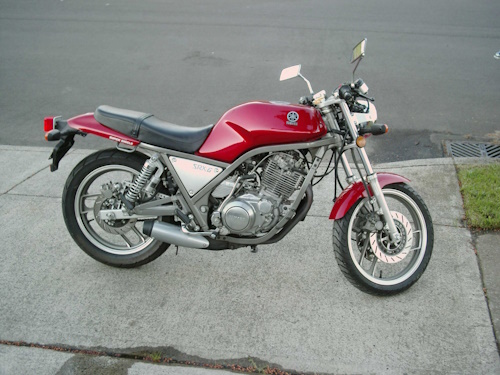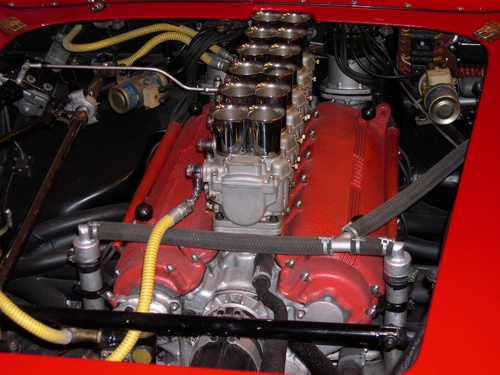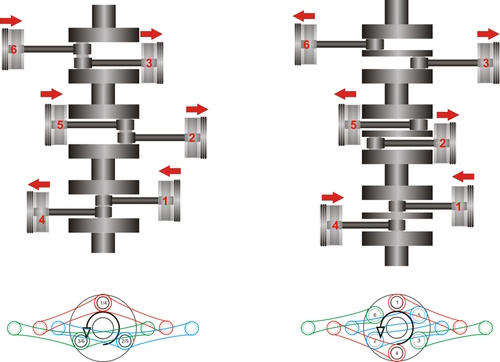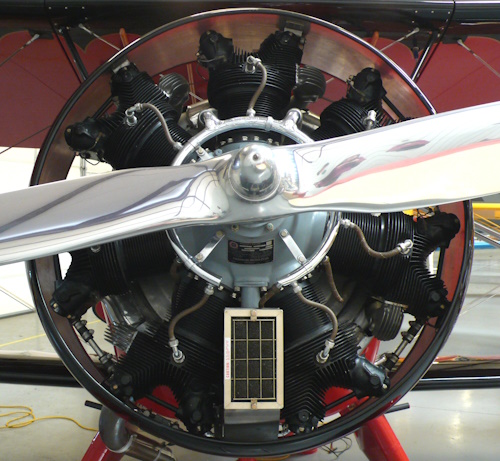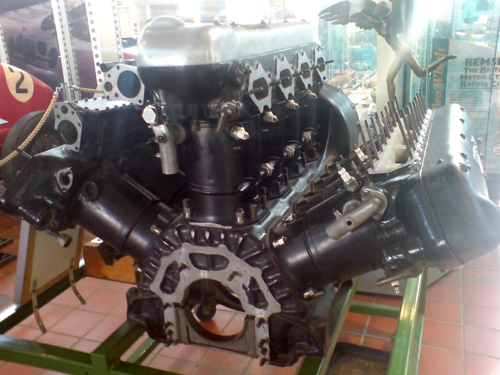Engine Configuration Explained
V2, straight-four, flat-six, V12… these are terms you probably heard frequently if you’re into automotive engineering. However, what do they mean? Let’s find out.
What it means
These terms refer to car engines. The first letter or word represents how the cylinders are arranged, and the number says how many cylinders the engine has in total.
Examples:
- V12: V (The engine is shaped as a V) 12 (12 cylinders in total)
- straight-six or inline-six: straight (The cylinders are arranged inline one after the other)-six (6 cylinders in total)
Single Cylinder
This isn’t even consider as an arrangement, as only one piston can’t form any arrangement. Single cylinder engines are common in low displacement motorcycles. They’re really simple, cheap and easy to maintain and repair.
The Yamaha SRX600, for example, has a single cylinder engine.
Straight or Inline arrangement
These are the most common cylinder arrangement in normal cars. It’s quite small and generally produces a reasonable amount of power and torque compared with it’s small size. Inline engines usually produce more torque than any other cylinder arrangement, that’s why it’s quite rare to see heavy duty vehicles such as buses or semis with a V arrangement, for example.
Furthermore, inline engines are more reliable and “easier” to maintain and repair compared to other types due to its simplicity. Inline engines also are well balanced due to the firing order, and produce little vibrations.
These are some types of inline engines produced:
- i2
- i3
- i4
- i5 (rare)
- i6
- i7 (only used in ships)
- i8 (rare)
- i9 (only used in ships)
- i12 (very rare)
- i14 (only used in ships)
Many cars have inline engines, such as the BMW 3 series, Mercedes-Benz C Class, Volvo 200 series, Honda Accord and many other cars.
V arrangement
The cylinders are arranged in a V shape. This arrangement is used in supercars and in many motorcycles. They’re relatively small when there’s a great amount of cylinders. However, they’re harder and more expensive to maintain and produce compared to inline engines.
Two banks of cylinders are needed. These are the two most common types of V engines: 60º (the two banks of cylinders are in a 60º angle) and 90º (90º angle). This type of engine is widely used for racing purposes and also in some sport cars and supercars.
These are some types of V engines produced:
- V-twin or V2
- V3 (rare)
- V4
- V5 (rare)
- V6
- V8
- V10
- V12
- V14 (only used in power generators and ships)
- V16 (rare)
- V18 (only used in power generators and ships)
- V20 (only used in power generators and ships)
- V24 (very rare)
Many cars and motorcycles have V engines, such as the Ford Mustang GT, Lamborghini Aventador, Ducati Panigale V4, or the Yamaha VMAX.
Flat arrangement
Flat or boxer engines have their cylinders opposed in a 180º angle. It’s called “flat” engine because as the cylinders are opposed, the engine is flat. Also, this type of engine is also called boxer, due to the cylinder movement being quite similar to a boxer’s punch. Moreover, it is important to know boxer engines are not exactly the same as flat engines, because the crankshaft is slightly modified, as shown in the image below.
Flat engines occupy very little space, even with more than 4 cylinders. Another advantages are that: it is easy to maintain because the engine is flat on the engine bay and it also makes it able for the car to have a lower center of mass.
These are some types of flat engines produced:
The main brands that use flat engines on some of their cars are Porsche, Subaru, Volkswagen and BMW for motorcycles. These are some examples: Porsche 911, Subaru Impreza or the BMW 1250 GS.
Radial arrangement
Radial engines aren’t very common. The cylinders are positioned in a circular shape. They were used in aeroplanes, as the center of mass is exactly in the center of the crankshaft. It is sometimes also called “star engine”. As all the connecting rods can’t be directly connected to the crankshaft, a master-and-articulating-rod is used.
Radial engines go from 5 cylinders up to 18 (usually).
Radial engines have been used in the B-25 Mitchell Fighter Plane or the Mitsubishi A6M Zero.
W arrangement
The W arrangement is similar to the V arrangement, as more than one cylinder bank is used. In these type of engines, three cylinder banks are used, which form the W-shaped engine. It is hard to maintain and repair, it is expensive to produce, and occupies a great amount of space. These are the reasons why they haven’t almost been used in cars nor in motorcycles.
These are some types of W engines:
W engines have been used in the 1906 Anzani 3-cylinder, the Rumpler Tropfenwagen or the Bugatti Veyron, Chiron or Divo.
